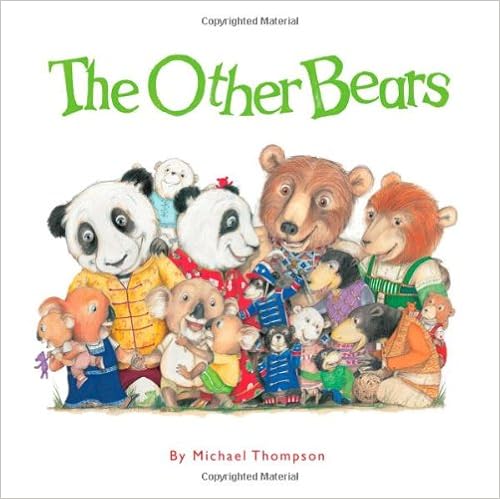Where is the magic intersection of great children’s literature and stories particularly helpful for early language acquisition?
I’ve spent a lot of time investigating my answers to this question and I hope my choices and the adaptations I offer here are helpful to you, whether you teach the young or the old who will tolerate a bit of the young. For more information on children’s stories that do more than teach language in the world language class, see this post where I borrow a lot of recommendations from Helena Curtain, as well as this post where I share some stories I’ve found useful with my own kids, some of which, as you’ll see below, I’ve adapted for my classroom as well.
Here are the stories I regularly use in my curriculum for 5- to 12-year-olds. In my adaptations here, I’ve used or included the English so that those of you who teach other languages can translate as desired.
Bears on Chairs: Sharing and problem-solving
 When my kids come through the door not knowing that loco means crazy (or will describe our class), our first story is this lovely rhyme by Shirley Panteneau and David Walker. The plot line is that four bears have chairs but the fifth bear doesn’t, and they’ll have to use their minds and hearts to figure out how to get that fifth bear on a chair. Through the whole first semester (in a schedule of 16 weekly meetings lasting one hour each), we used this story to practice the targets:
When my kids come through the door not knowing that loco means crazy (or will describe our class), our first story is this lovely rhyme by Shirley Panteneau and David Walker. The plot line is that four bears have chairs but the fifth bear doesn’t, and they’ll have to use their minds and hearts to figure out how to get that fifth bear on a chair. Through the whole first semester (in a schedule of 16 weekly meetings lasting one hour each), we used this story to practice the targets:
- numbers one through five
- vocabulary “chairs” “bears” “how many” “cool” “oh no!” “what a problem!” “very good” “hi” “on” “and”
- structures “where is” “this is” “his/her name is”
It’s not nearly as cute without the rhyme, but here’s my adaptation of Bears on Chairs.
The Mixed-Up Chameleon: Be who you’re made to be
 As usual, I overestimated how quickly my students would develop a good interaction with the first book, Bears on Chairs, and we didn’t get around to using The Mixed Up Chameleon. But I still love and recommend the book, especially if you have more time than I did. The targets here are:
As usual, I overestimated how quickly my students would develop a good interaction with the first book, Bears on Chairs, and we didn’t get around to using The Mixed Up Chameleon. But I still love and recommend the book, especially if you have more time than I did. The targets here are:
- colors
- vocabulary “was” “said” “saw” “so” (describing words)
- states of being “I’m hot” “I’m cold” “I’m bored” “I’m happy”
- structures “I’m not” “I want to be…” “_____ is [descriptor]”
Though I wasn’t able to use it this year, here is my early novice version of The Mixed-Up Chameleon.
The Other Bears: Celebrate differences
 I’ve got to say that this might be my favorite early language class story of all time. The message is so critical: it’s exactly what we are trying to get across to our students. As I said in my earlier post, the message of this book is not to tolerate differences, but to actually celebrate them and how they contribute to all our lives. I can’t wait to walk my little ones through this story of younger bears helping the older bears see how every bear is happier because there are other bears (cough, Academy). And of course, there’s the language. This book is easily adapted to practice important targets:
I’ve got to say that this might be my favorite early language class story of all time. The message is so critical: it’s exactly what we are trying to get across to our students. As I said in my earlier post, the message of this book is not to tolerate differences, but to actually celebrate them and how they contribute to all our lives. I can’t wait to walk my little ones through this story of younger bears helping the older bears see how every bear is happier because there are other bears (cough, Academy). And of course, there’s the language. This book is easily adapted to practice important targets:
- family
- vocabulary “look!” “other” “more” (descriptors)
- structures “I (don’t) like” “I love” “they are (not)” “in a bad/good mood”
Here is my early novice adaptation of The Other Bears. We’ll be doing this story all semester, but if I had a better schedule and more time with my students, we’d end the year with The Very Busy Spider (a.k.a. Keep Working – It’ll Pay Off).
Have you used one of these stories successfully with your early learners? What other simple, beautiful stories do your students love and benefit from?



